18 Recommended Dishes You Can Try When Traveling Abroad
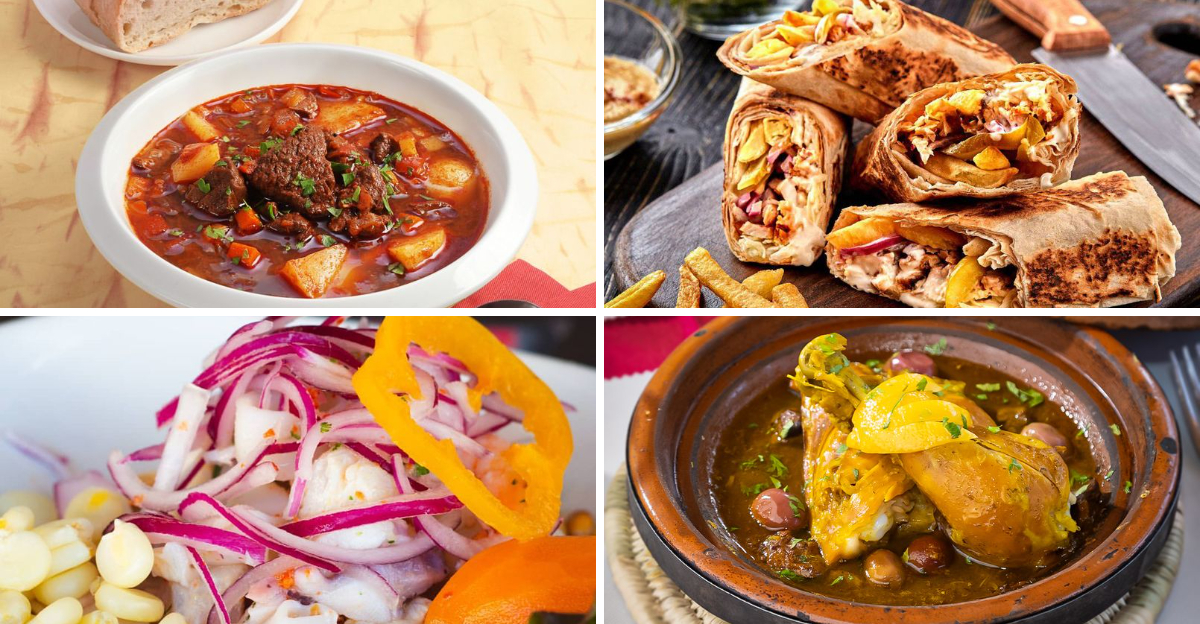
Exploring diverse culinary experiences can be an exciting part of traveling, offering a deeper connection to different cultures. Here are 18 different dishes from around the world that showcase both traditional flavors and culinary techniques. From hearty comfort foods to bold, unexpected ingredients, these dishes provide an opportunity to expand your palate. Each dish presents a chance to taste authentic local cuisine while embracing new flavors and textures. Whether you’re an adventurous eater or simply curious, these selections highlight the richness of global food traditions. Discover new favorites and enjoy the journey through taste.
1. Ceviche from Peru
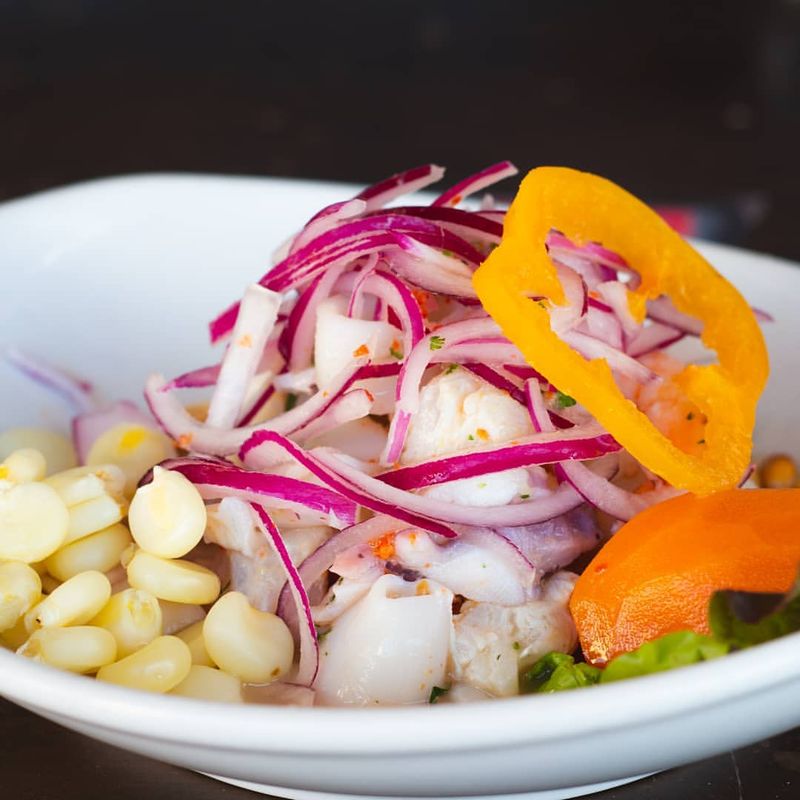
Ceviche, a traditional Peruvian delight, is a refreshing dish that combines raw fish with the zesty flavors of lime and lemon juice. Typically served with sliced onions, chili peppers, and cilantro, it offers a burst of freshness. Ceviche is a staple of coastal regions and is often paired with sweet potatoes or corn. Marinating techniques vary, with the acid from the citrus ‘cooking’ the fish while retaining its natural tenderness. This dish is not only a refreshing appetizer but also a cultural experience, reflecting Peru’s rich culinary heritage. Whether enjoyed in a high-end restaurant or a seaside shack, ceviche captures the essence of Peruvian cuisine.
2. Falafel from Lebanon
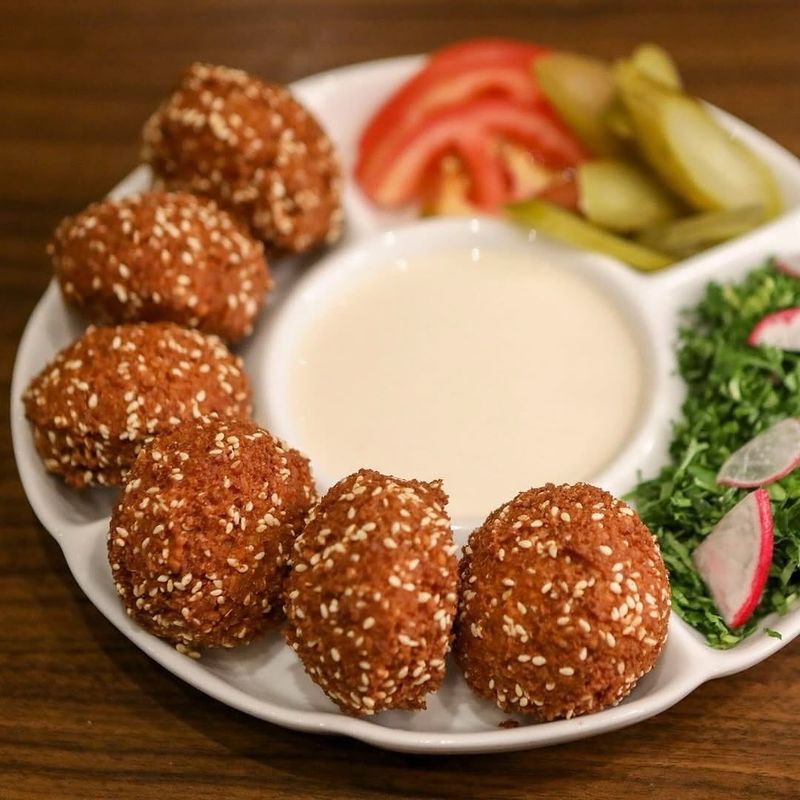
Falafel is a liked Middle Eastern street food, originating from Lebanon, made from ground chickpeas or fava beans, seasoned with spices and herbs. These small, deep-fried balls or patties are typically served in a wrap or pita bread, accompanied by fresh vegetables like lettuce, tomatoes, and cucumbers. A creamy tahini or tangy garlic sauce complements the falafel, enhancing its savory flavors. The crispy outer layer and soft interior make falafel a versatile dish suitable for meals throughout the day. Its popularity extends the Middle East, appealing to vegetarians and food enthusiasts worldwide due to its rich flavor and satisfying texture.
3. Rendang from Indonesia
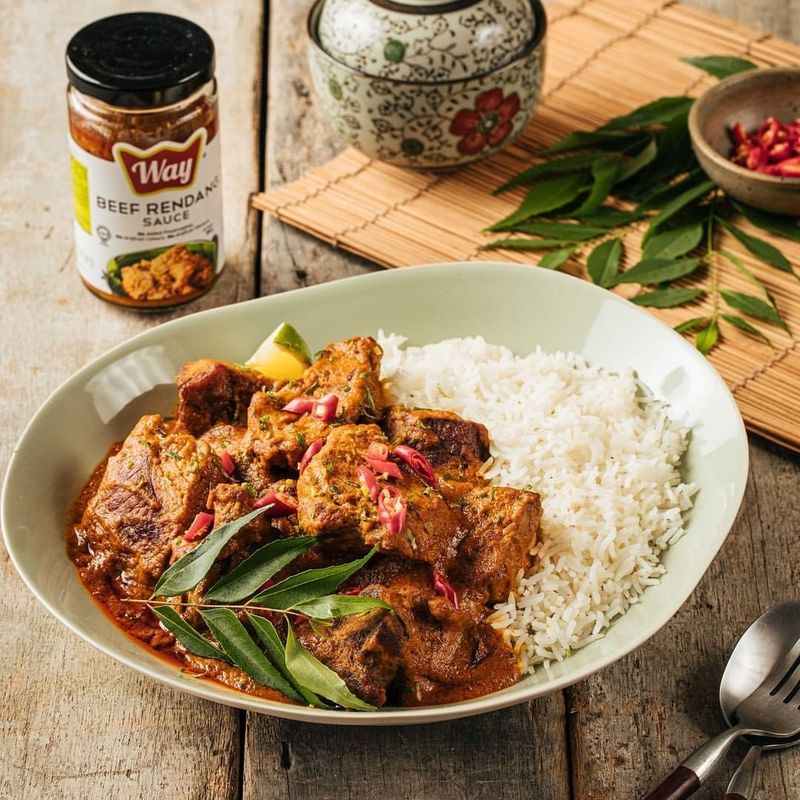
Rendang, originating from Indonesia, is a flavorful beef dish cooked with coconut milk and a blend of rich spices. This slow-cooked delicacy is known for its tender meat, infused with aromatic herbs and spices, making a symphony of taste. Traditionally served during ceremonial occasions, rendang has become a favorite across the globe. The slow cooking process allows the flavors to meld beautifully, resulting in a dish that’s both rich and savory. While it is often associated with events, rendang is also enjoyed as an everyday meal, highlighting the depth of Indonesian culinary tradition.
4. Tagine from Morocco
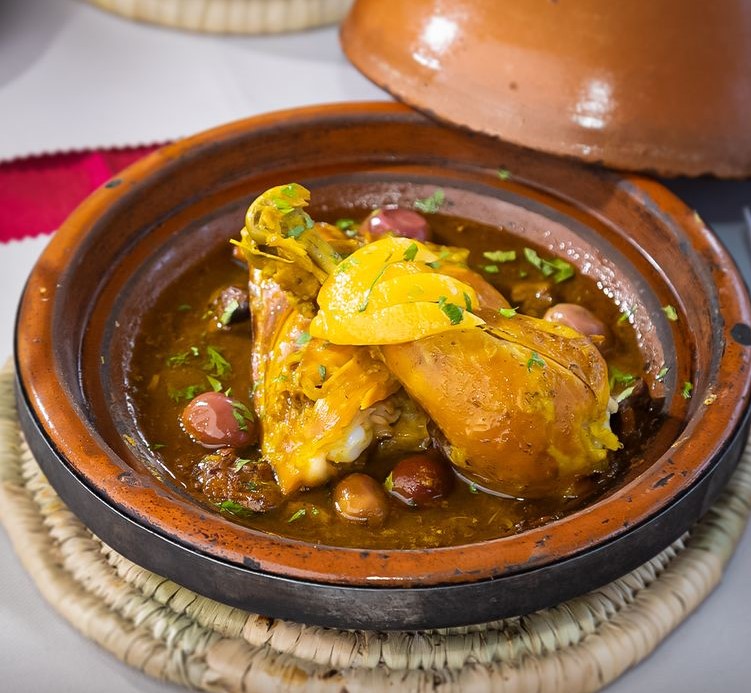
Tagine, a North African dish named after the conical clay pot in which it is prepared, is a staple in Moroccan cuisine. This slow-cooked stew typically includes lamb or chicken, combined with a medley of spices, dried fruits, and nuts. The pot design allows steam to circulate, infusing the ingredients with flavor. Tagine is often served with couscous or bread, making it a hearty meal suitable for sharing. Its blend of sweet and savory elements, along with the aromatic spices, offers a distinctive taste that reflects Morocco’s rich culinary traditions. Tagine is not just a dish; it’s a cultural experience.
5. Pad Thai from Thailand
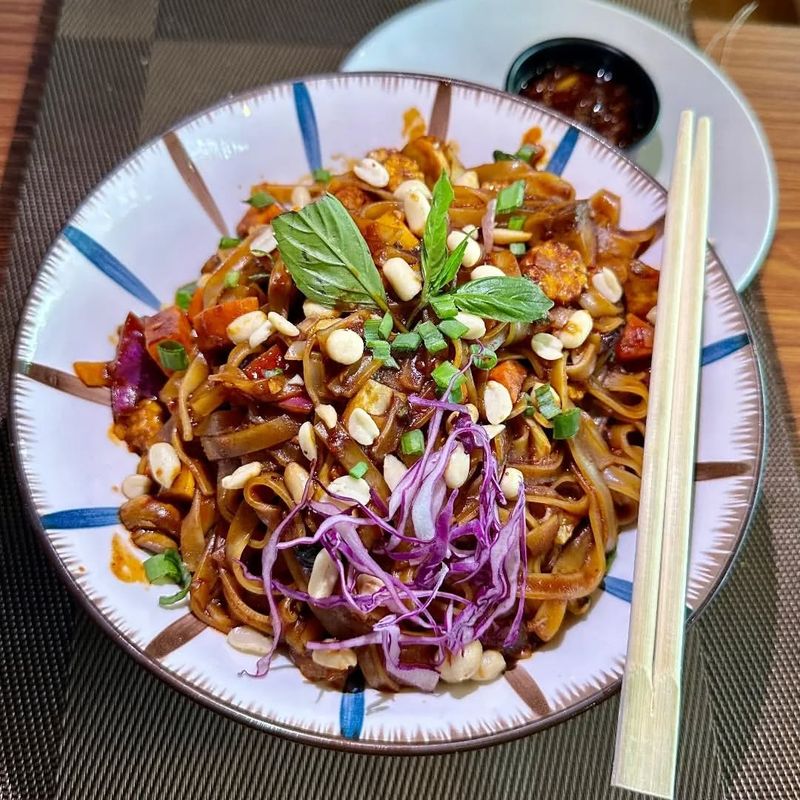
Pad Thai, a quintessential Thai street food, is a stir-fried noodle dish that balances sweet, sour, and salty flavors. Made with rice noodles, it features ingredients like shrimp, chicken, or tofu, along with eggs, peanuts, and bean sprouts. The dish is typically garnished with lime wedges and chili flakes, enhancing its complex taste. A staple in Thai cuisine, Pad Thai is enjoyed by locals and travelers alike for its flavors and quick preparation. It serves as an introduction to Thai cuisine, showcasing the country’s emphasis on balance in cooking.
6. Couscous from Algeria
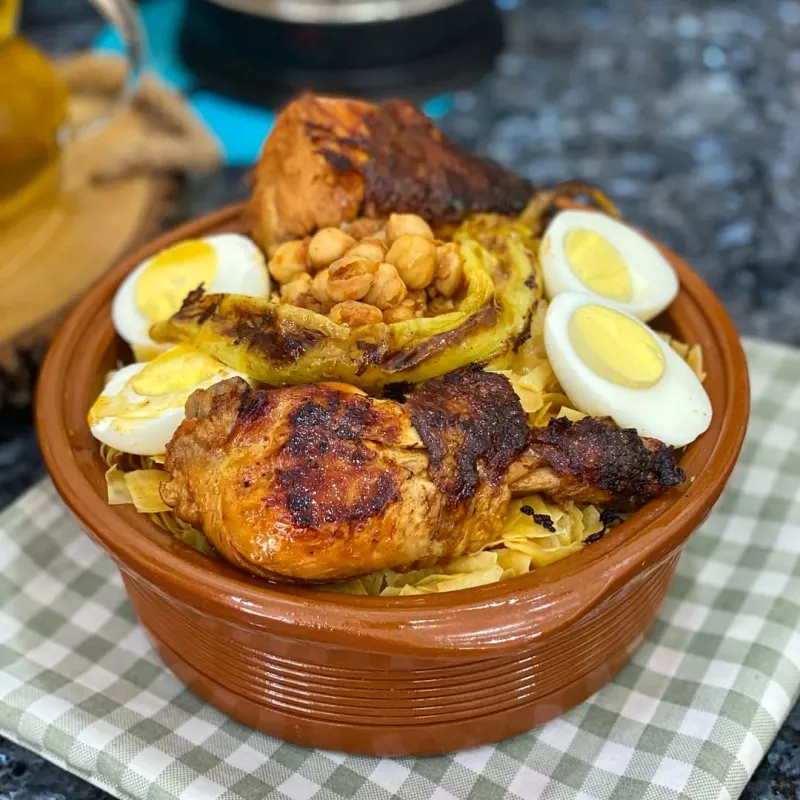
Couscous, a staple in North African cuisine, is particularly popular in Algeria. This dish features tiny steamed balls of semolina wheat, often served with meat, vegetables, and a spicy broth. Couscous is a versatile meal, enjoyed as both a main course and a side dish. In Algerian households, it is often prepared on Fridays, symbolizing family and community gatherings. The dish’s texture and flavor can vary based on regional ingredients and cooking methods, reflecting the diverse cultural influences in Algerian cuisine. Couscous is more than just a meal; it embodies the warmth and hospitality of North African culture.
7. Kimchi from South Korea
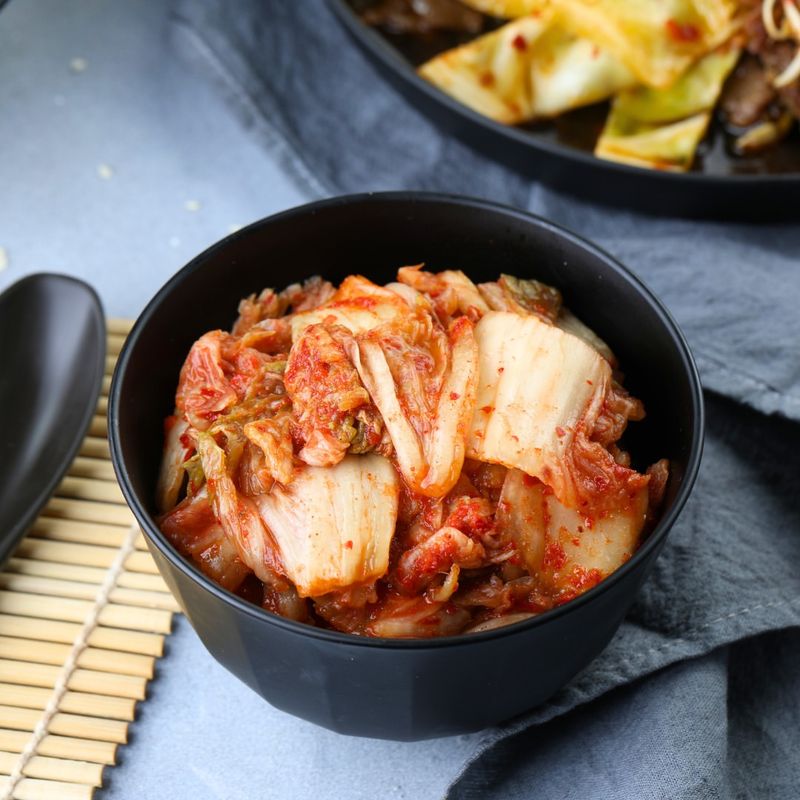
Kimchi, a staple in Korean cuisine, is a side dish made from napa cabbage and Korean radishes, seasoned with chili pepper, garlic, ginger, and various spices. Known for its robust and tangy flavors, kimchi is rich in vitamins and probiotics. Each household has its own recipe, often passed down through generations, making kimchi a personal and cultural expression. It is traditionally served at every Korean meal, often paired with rice or noodles.
8. Sushi from Japan
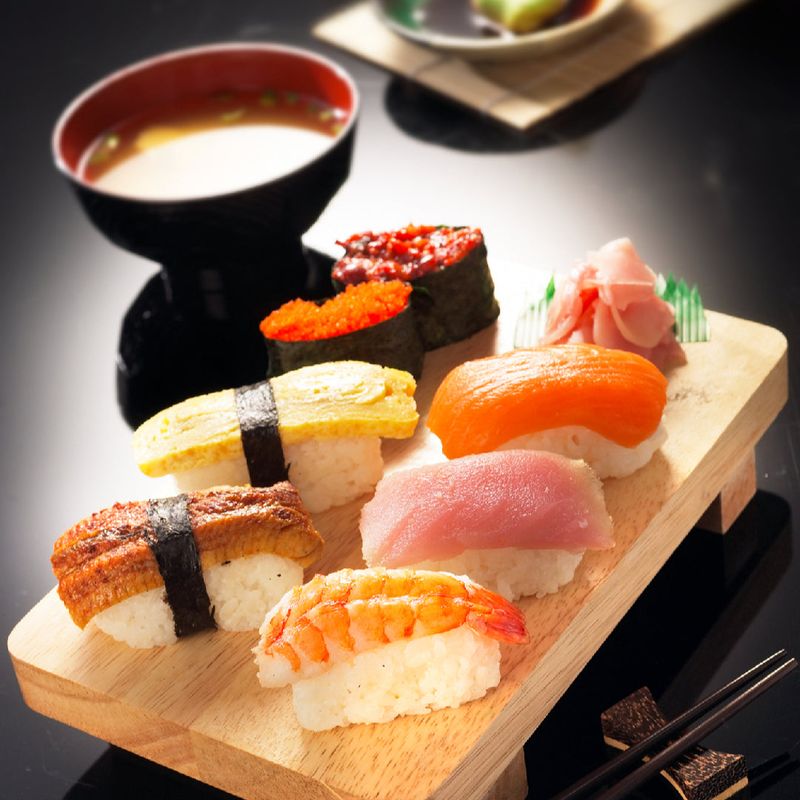
Sushi, a Japanese culinary art form, consists of rice paired with various ingredients like seafood, vegetables, and occasionally tropical fruits. Known for its aesthetic presentation, sushi ranges from simple nigiri to elaborate rolls. It is often accompanied by soy sauce, wasabi, and pickled ginger. Sushi is more than just a meal; it reflects the precision of Japanese culinary traditions. Although originating as a street food, it has evolved into a sophisticated dining experience enjoyed worldwide. The dish emphasizes freshness and quality, making it a try dish for those exploring global cuisines.
9. Biryani from India
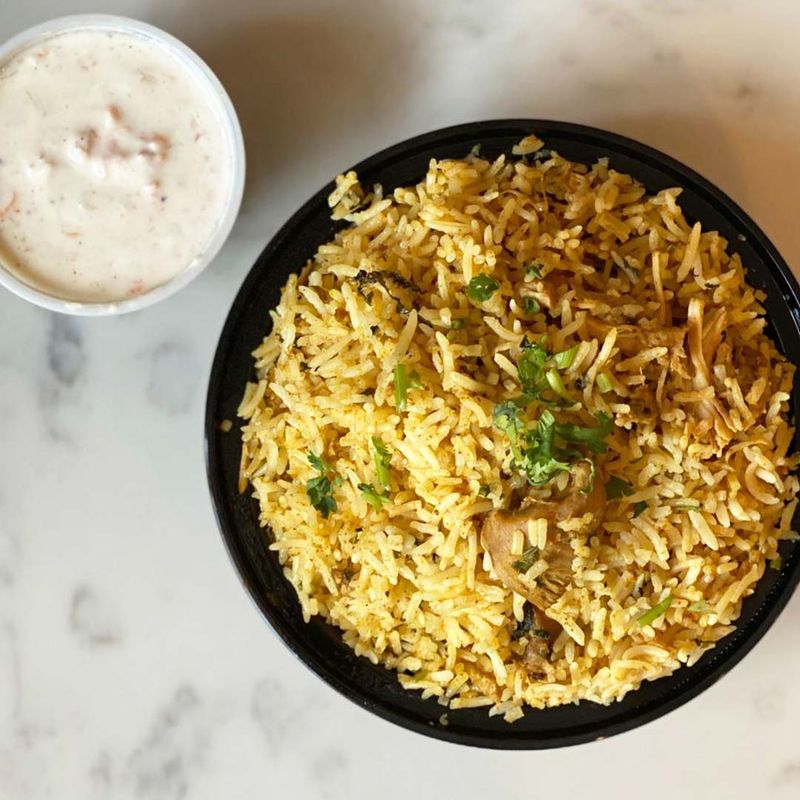
Biryani, an aromatic rice dish from India, blends basmati rice with spices, meats, and sometimes vegetables. This one-pot meal varies by region, with different ingredients and cooking techniques. Commonly made with chicken or lamb, biryani is distinguished by its fragrant spices and colorful presentation. The layering method and slow-cooking enhance the flavors, resulting in a rich, aromatic dish. Served during occasions and family gatherings, biryani reflects the diversity of Indian cuisine. The harmonious blend of spices and textures makes it a beloved dish, capturing the essence of India’s culinary heritage.
10. Goulash from Hungary
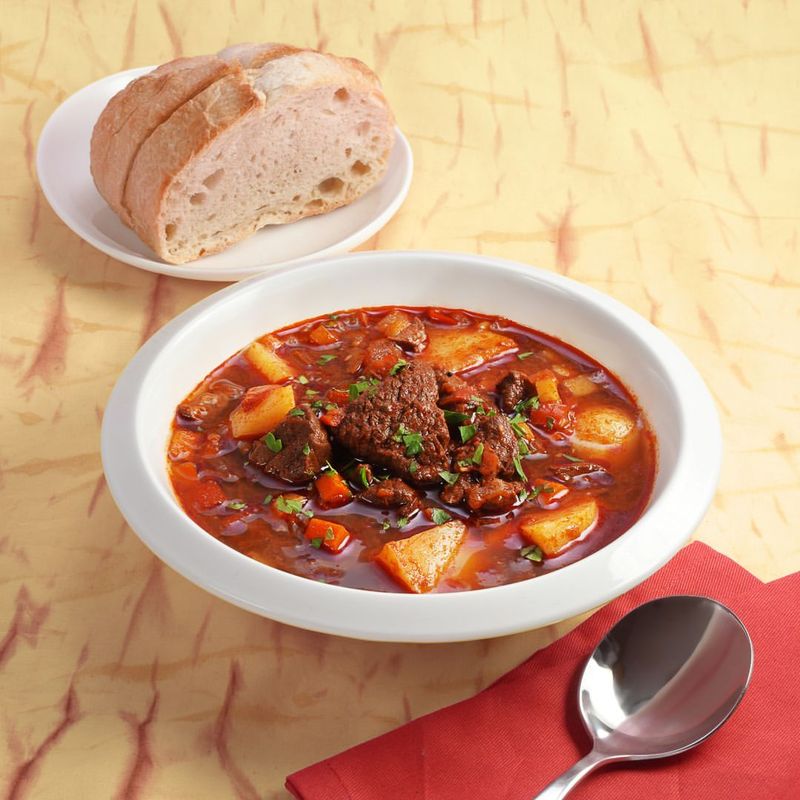
Goulash is a classic Hungarian stew that is both filling and flavorful. Made with tender chunks of beef, an array of vegetables, and a generous amount of paprika, this dish is a staple in Hungarian cuisine. The origins of goulash can be traced back to the century when Hungarian shepherds cooked it over open fires. Today, it’s a popular dish served in restaurants and homes across Hungary. The rich, hearty flavors of goulash make it a excellent meal for those seeking warmth and comfort. Pair it with a slice of crusty bread to soak up every last drop of the delicious broth.
11. Som Tam from Thailand
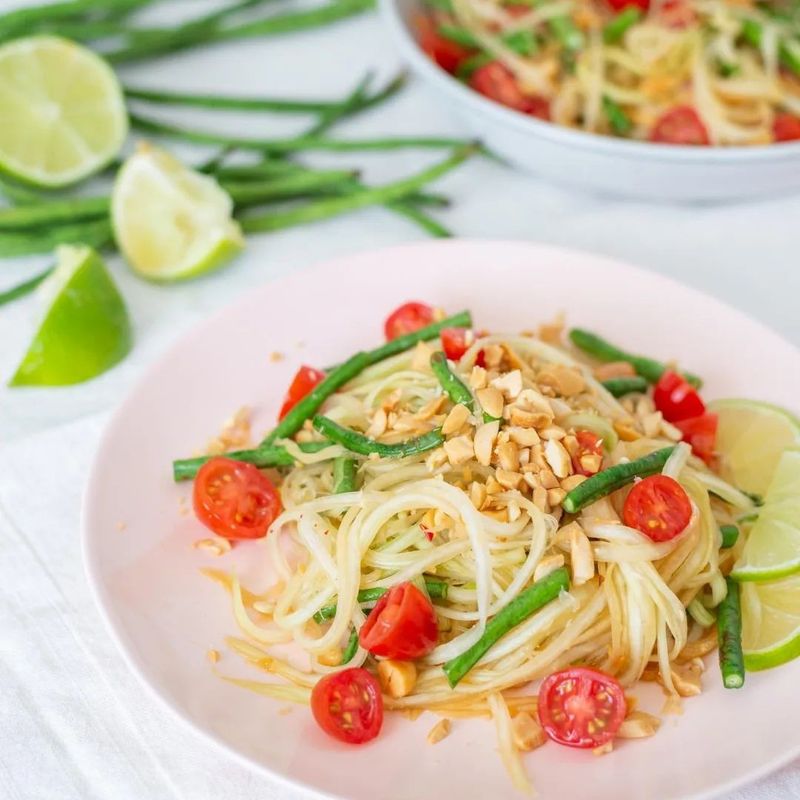
Som Tam, a spicy green papaya salad from Thailand, is a refreshing dish combining shredded unripe papaya with tomatoes, peanuts, and a tangy dressing made from lime juice and fish sauce. The salad offers a balance of spicy, sour, and sweet flavors, making it a popular street food choice. Typically prepared using a mortar and pestle, Som Tam allows the ingredients to meld, enhancing its nice taste. This dish is a staple in Thai cuisine, enjoyed both as an appetizer and a main course. Its refreshing qualities and flavors provide a glimpse into Thailand’s culinary diversity.
12. Shawarma from the Middle East

Shawarma, a popular Middle Eastern street food, consists of marinated meat, typically chicken or beef, slow-roasted on a vertical rotisserie. The meat is shaved off and served in a wrap or pita, accompanied by fresh vegetables and sauces like tahini or garlic paste. Shawarma’s flavors are enriched by spices such as cumin, turmeric, and cardamom, making a savory and satisfying meal. It is widely available across the Middle East and has gained international popularity for its delicious taste and convenience. Shawarma represents the rich culinary traditions of the region, providing a taste of Middle Eastern hospitality.
13. Moussaka from Greece
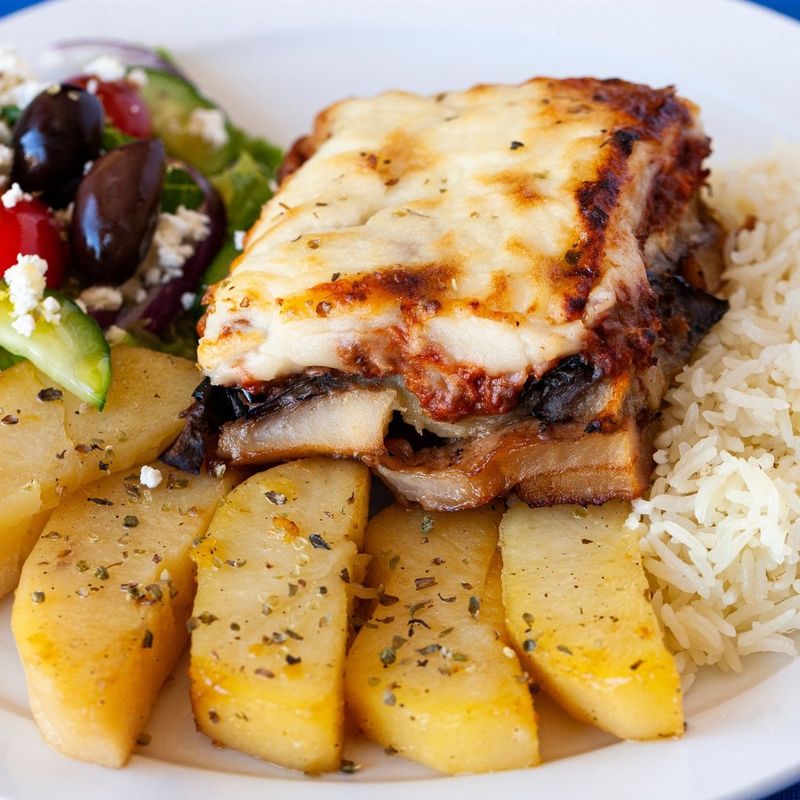
Moussaka is a quintessential Greek dish that offers a delightful mix of flavors and textures. This hearty casserole features layers of cooked eggplant, spiced minced meat, and a creamy béchamel sauce, baked to a golden brown. Enjoying moussaka in a traditional Greek taverna is an experience in itself. The aroma of herbs and spices fills the air, complementing the rustic ambiance. It’s a dish that symbolizes Greek hospitality and culinary tradition, offering a taste of the Mediterranean’s rich history and culture.
14. Dolma from Turkey
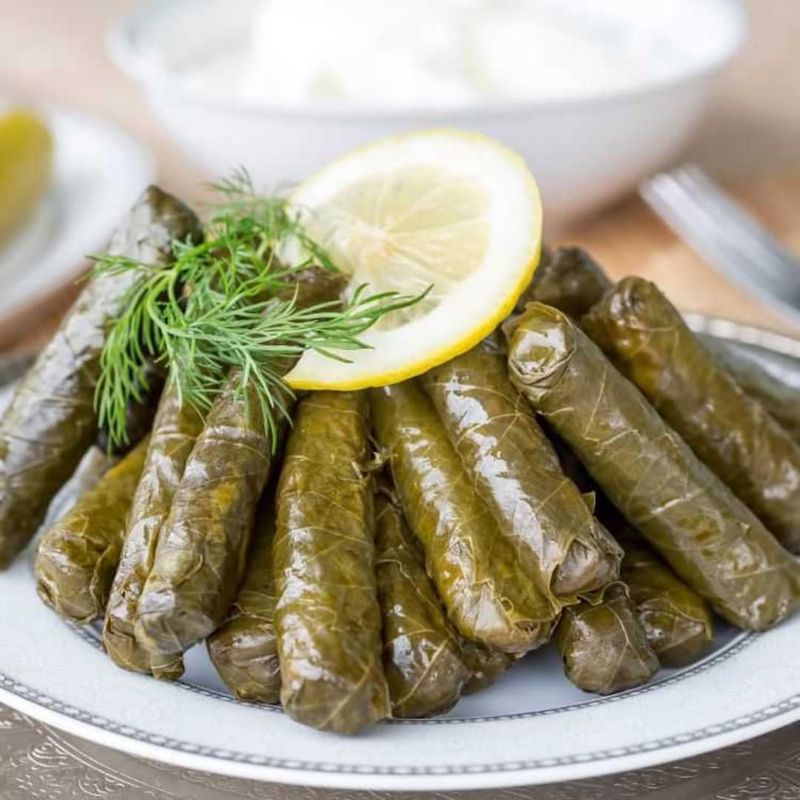
Dolma, a traditional dish from Turkey, involves grape leaves or vegetables stuffed with a mixture of rice, pine nuts, and spices. This versatile dish is enjoyed both hot and cold, often served as an appetizer or part of a larger meal. Dolma showcases the rich flavors and textures of Turkish cuisine, with variations found across the Middle East and Mediterranean. The dish reflects a blend of tastes, combining the earthiness of grape leaves with the aromatic filling. Whether enjoyed during occasions or as a casual meal, dolma offers a glimpse into Turkey’s culinary heritage.
15. Yassa from Senegal
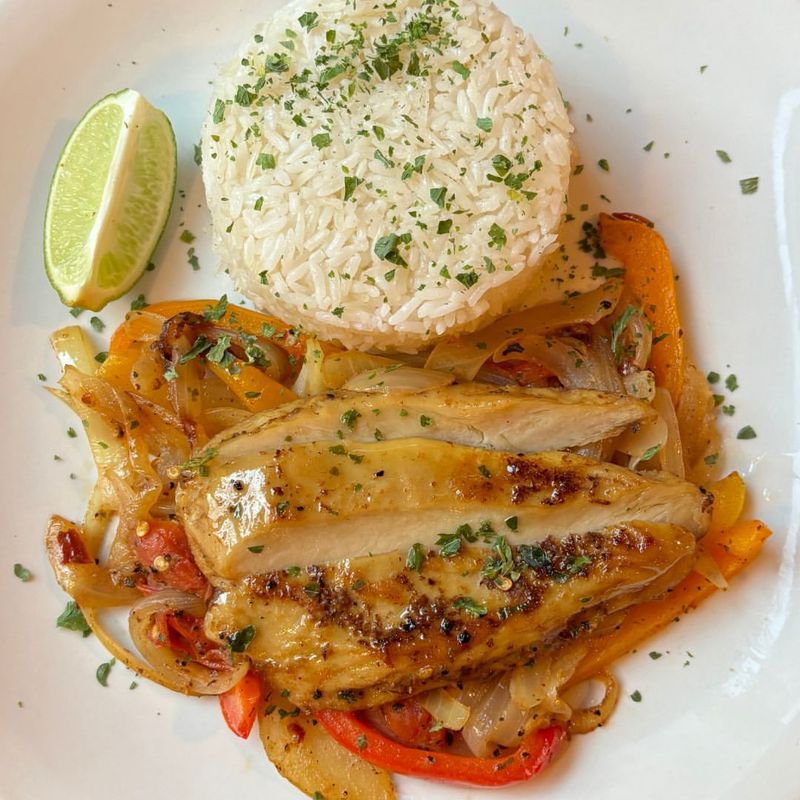
Yassa, a classic Senegalese dish, features marinated chicken or fish cooked with onions, lemon, and mustard. The marination process infuses the meat with tangy and savory flavors, while the caramelized onions add a touch of sweetness. Yassa is often served with rice, making it a hearty and satisfying meal. This dish is popular across West Africa, known for its rich taste and comforting qualities. Yassa enjoys the culinary traditions of Senegal, offering a delightful combination of flavors that are both familiar and exotic. It’s a try option for those exploring African cuisine.
16. Jollof Rice from Nigeria
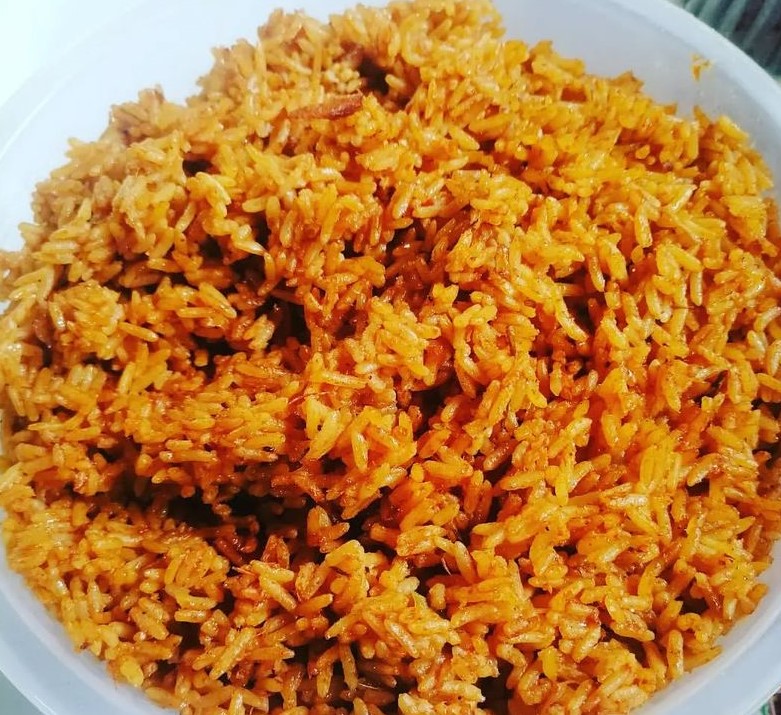
Jollof Rice, a popular West African dish, is a one-pot meal made with rice, tomatoes, onions, and spices. This dish is used at occasions and gatherings, enjoyed for its rich flavor and appearance. Each region in West Africa has its own variation, with Nigeria’s version known for its bold taste and fiery spice. Jollof Rice is often served with chicken, fish, or plantains, making it a versatile and satisfying meal. The dish reflects the cultural diversity and culinary of West Africa, offering a taste of the region’s hospitality and warmth.
17. Bibimbap from South Korea
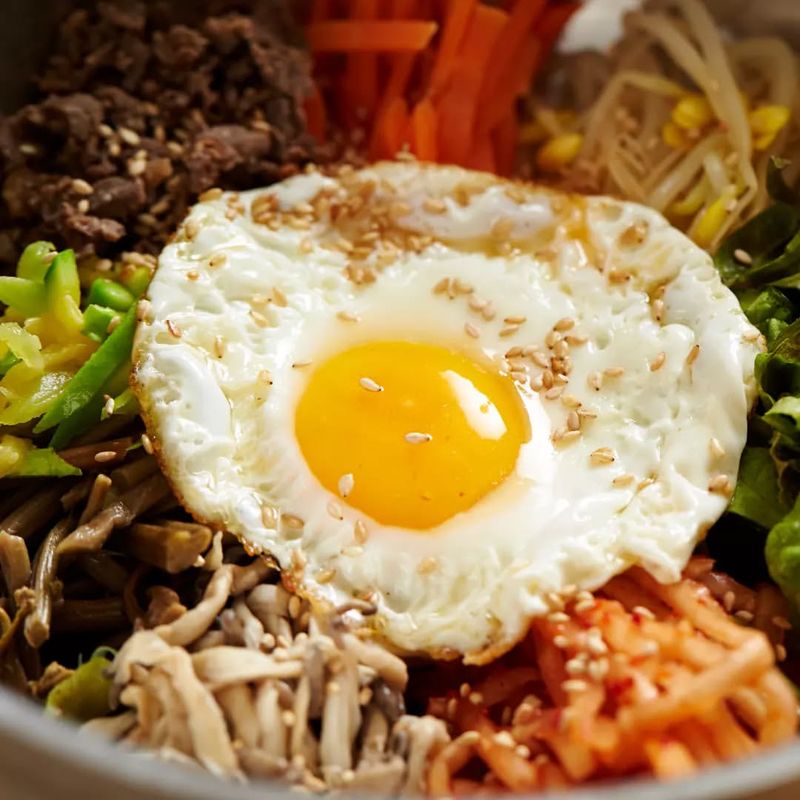
Bibimbap is a popular Korean dish that offers a delightful mix of flavors and textures. Meaning ‘mixed rice,’ it includes a variety of vegetables, seasoned beef, and cooked egg on top. The dish is traditionally stirred together with gochujang, a spicy-sweet Korean chili paste, which binds the ingredients with its rich flavor. Each bite is a harmonious blend of spicy, savory, and fresh elements. Bibimbap is not just about the taste; it’s a reflection of Korea’s food culture, often enjoyed in bustling markets or cozy restaurants.
18. Pita Bread with Hummus from the Mediterranean
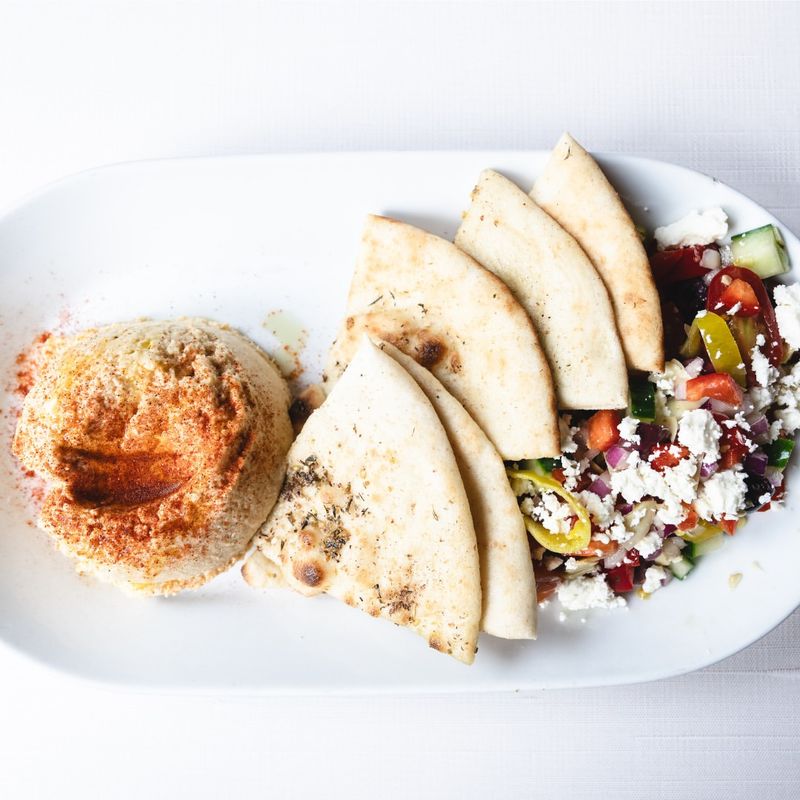
Pita bread with hummus is a classic Mediterranean pairing that combines the soft, chewy texture of pita with the creamy, rich flavors of hummus. Hummus, made from blended chickpeas, tahini, lemon juice, and garlic, offers a smooth and savory taste that complements the simplicity of pita bread. This combination is a staple in many Mediterranean cuisines, enjoyed as an appetizer or snack. The duo provides a satisfying and nutritious option, excellent for sharing with friends and family. Its versatility and delightful flavors make pita with hummus a timeless and accessible dish for anyone exploring Mediterranean cuisine.
